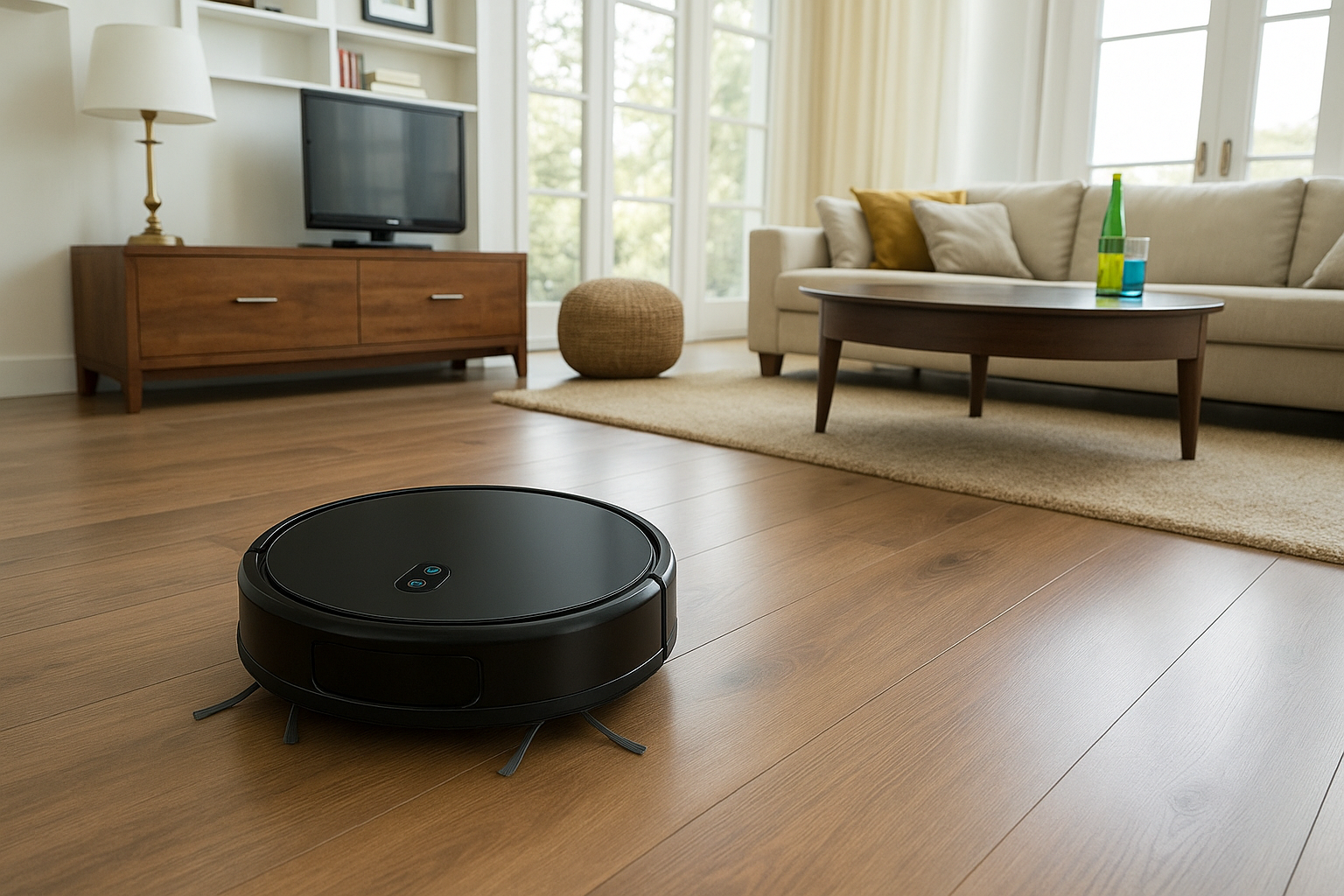
Embarking on my quest for the quintessential robotic vacuum for my residence, I found myself awash in a sea of choices and tantalizing features. Like many others, I was lured in by the promise of convenience and the substantial time savings these ingenious devices could offer. Yet, a critical question loomed: how do I sift through the options to select the vacuum that perfectly caters to my needs? This expedition propelled me into the world of diverse models, each flaunting sophisticated features such as AI-enhanced navigation, adaptive suction technologies, and seamless smart home integration. I soon realized that the essence of my search lay in a profound understanding of my personal requirements in conjunction with the distinctive characteristics of each vacuum.
Tackling everything from tenacious pet hair embedded in plush carpets to errant crumbs scattered across hardwood floors underscored the importance of aligning a vacuum’s capabilities with the unique demands of my living space. For instance, devices boasting potent suction and tangle-free brushes shine when confronted with high-pile carpets, while the addition of mopping functions proves invaluable on tile surfaces. As I delved deeper into the technical specifications, evaluating metrics like Pascal (Pa) suction power and battery longevity, it became increasingly evident that while premium models may showcase state-of-the-art features, mid-range alternatives often deliver remarkable performance at a fraction of the cost.
In the end, the endeavor transcends merely hunting for the device replete with features; it necessitates choosing a robotic vacuum that resonates with your cleaning priorities, lifestyle, and financial parameters. I wholeheartedly encourage you to weigh these elements carefully while drawing on the wealth of user reviews and expert insights available. By taking this approach, you can decisively select a model that not only elevates the cleanliness of your home but also integrates effortlessly into your day-to-day life.
The search for a robotic vacuum should ignore personal cleaning needs.False
Personal requirements are crucial for selecting the right vacuum model.
Robotic vacuums can provide substantial time savings and convenience.True
These devices are designed to automate cleaning, freeing up your time.
2. How Does Floor Type Impact Robotic Vacuum Performance?
3. What Are the Most Effective Navigation Technologies?
4. What Are the Latest Suction and Mopping Technologies?
5. How to Integrate Smart Technology into Robotic Vacuums?
6. What are the Long-term Costs of Maintenance?
7. What Emerging Technologies Should You Know About?
8. Conclusion
What Are the Key Parameters for Choosing a Robotic Vacuum?
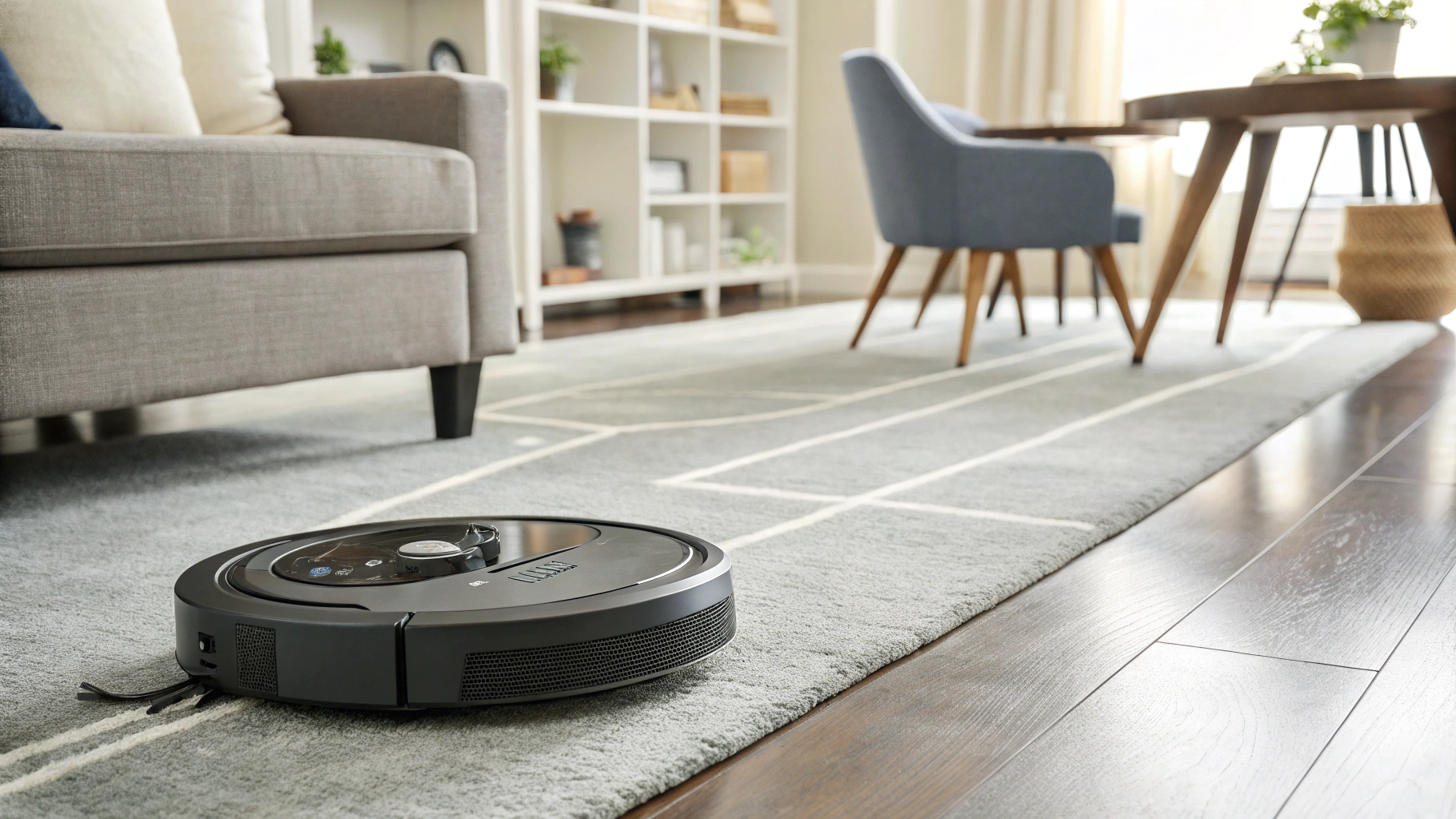
Embarking on my journey to purchase a robotic vacuum was akin to stepping into a labyrinth of features and choices, each more perplexing than the last. The challenge of identifying the ideal model to meet the unique demands of my living space felt formidable. With buzzwords like LiDAR navigation, Pa suction power, and smart mapping swirling around me, I found myself momentarily adrift. Yet, after diving into research and gaining some hands-on insights, I unearthed several pivotal factors that transformed this seemingly daunting endeavor into a more navigable experience.
The significance of navigation technology emerged as a crucial revelation. LiDAR systems provide an unmatched level of precision, while more economical alternatives showcase infrared systems that, though basic, still deliver commendable performance. It became evident that understanding suction power, typically quantified in Pascals, is vital—particularly for those with carpets or furry companions. Moreover, robust sensors play an indispensable role; they are not mere luxuries, but rather essentials for effective obstacle navigation. Additionally, recognizing the importance of ample battery life and straightforward maintenance features quickly became priorities in my decision-making process.
In conclusion, when selecting the perfect robotic vacuum, factors such as navigation accuracy, suction strength, battery longevity, and sensor efficacy are paramount—they significantly influence both functionality and ease of use. This newfound clarity paved my way forward, and I sincerely hope it empowers you in your quest for the ideal device. Keep these considerations in mind for your next purchase—they can truly revolutionize your cleaning experience!
Essential Factors to Consider When Choosing a Robotic Vacuum
Did you know that the choice of robotic vacuum can significantly impact your cleaning efficiency? As I navigated through the myriad of options, I discovered that key parameters such as navigation technology, suction power, and battery life were critical in shaping my decision. Ultimately, understanding these factors revolutionized my cleaning routine and made the entire selection process more manageable.
| Parameter | Description | Importance |
|---|---|---|
| Navigation Technology | LiDAR provides precise mapping; infrared is cost-effective but less accurate. | High |
| Suction Power | Measured in Pascals; essential for carpets and pet hair. | High |
| Battery Life | Adequate battery life ensures uninterrupted cleaning sessions. | Moderate |
| Sensor Efficacy | Robust sensors enhance obstacle avoidance and navigation. | High |
| Maintenance Features | Ease of maintenance reduces hassle and prolongs vacuum life. | Moderate |
LiDAR navigation systems provide less precision than infrared systems.False
LiDAR systems are known for their high precision compared to infrared systems.
Suction power is an important consideration for robotic vacuum buyers.True
Understanding suction power in Pascals is critical, especially for carpets.
Understanding Technical Specifications
Navigating the intricate maze of technical specifications may appear formidable, but mastering this skill is essential. These specifications delineate a product’s parameters and functionalities, serving as the cornerstone of engineering disciplines. Grasping their subtleties guarantees compliance with industry norms. By honing the ability to decipher these documents, engineers can forge resilient projects. A carefully crafted checklist complements this process, inherently reducing risk. Moreover, illuminating examples serve as invaluable guides, revealing profound insights and impactful applications within the engineering sphere.
Balancing Cost and Performance
Steering through the intricate puzzle of expenditure versus efficacy necessitates shrewd methodologies. Employing a cost performance analysis unveils inefficiencies lurking beneath the surface. A robust cost management paradigm intertwines cost efficiency insights with performance enhancement tactics. Striking a delicate balance between cost and quality is pivotal in the relentless pursuit of value. Incorporate financial performance indicators into performance measurement frameworks to elevate overall output. Through the embrace of clever cost curtailment tactics, organizations can significantly refine their budgetary performance assessment, ensuring an enduring equilibrium that fosters sustainable prosperity.
Analyzing Market Trends
Grasping the nuances of market dynamics is crucial in today’s ever-evolving landscape. Through diligent market scrutiny, enterprises can illuminate sectorial insights and detect transformative consumer behaviors. An exhaustive business market scrutiny plays a significant role in pinpointing pivotal market categories and investment propensities. It is via ongoing market exploration and sagacious trend prognostication that one can fully understand the economic currents shaping market functionalities. As competitive evaluations unveil sales patterns, the indispensable nature of market trend evaluation becomes evident. The emergence of novel market paradigms not only yields valuable insights but also propels market advancement assessments, thereby impacting financial trends and real estate dynamics profoundly.
How Does Floor Type Impact Robotic Vacuum Performance?
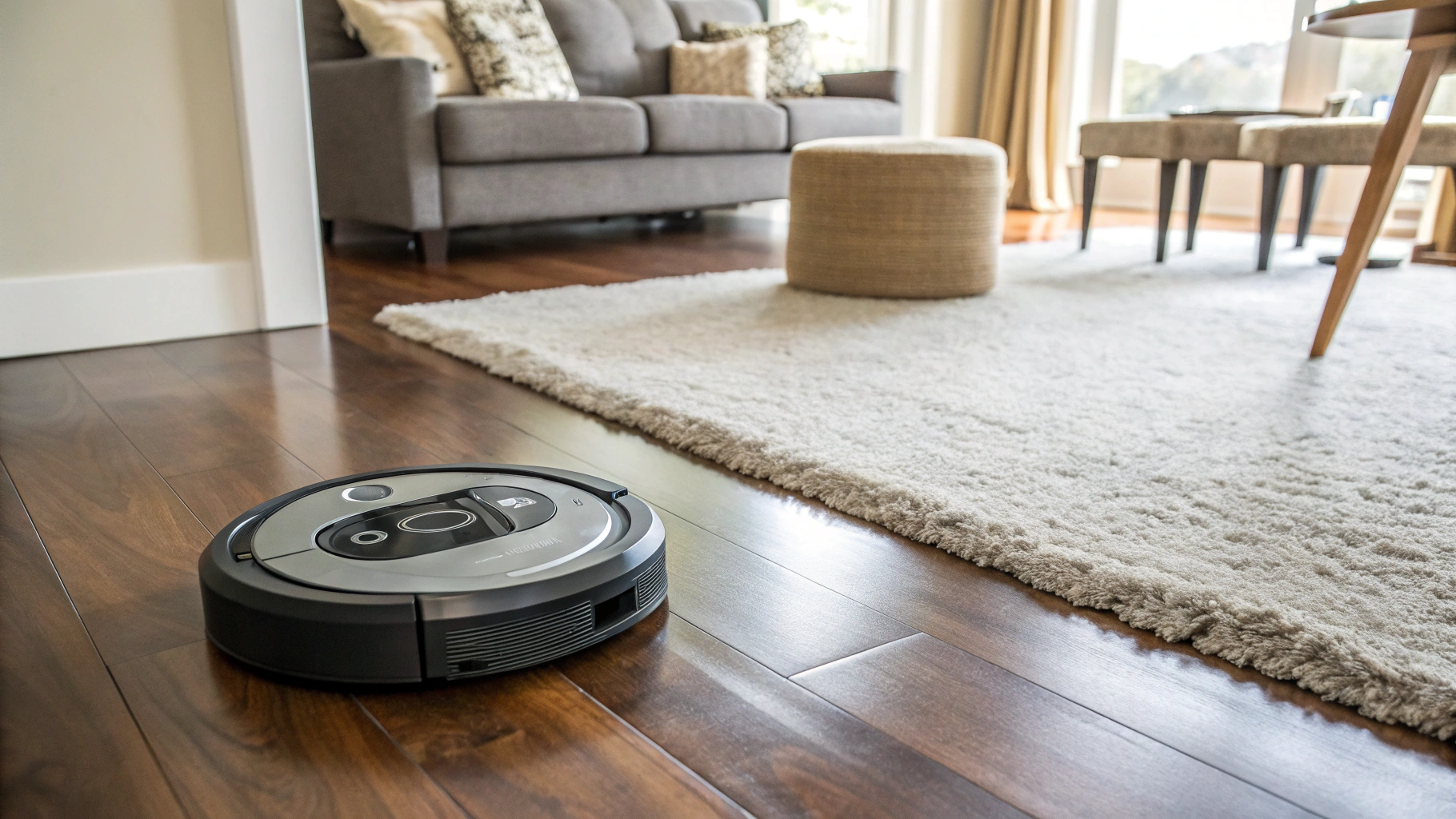
My Journey to Selecting the Ideal Robotic Vacuum for My Home
As I embarked on the quest to find the perfect robotic vacuum, I was initially inundated by an overwhelming array of options. Each model seemed to tout its own impressive cleaning capabilities, but how could I discern which one would truly cater to the specific demands of my home? Through a blend of thorough research and my own hands-on experience, I ultimately arrived at a decision that best suited my household’s needs.
My journey commenced with a careful evaluation of the various flooring types I had to contend with—hardwood in the living room, plush carpeting in the bedrooms, and tile in the kitchen. I quickly uncovered that hardwood floors require vacuums featuring soft brushes to prevent unsightly scratches, while high-pile carpets necessitate robust suction power to delve into the depths of the fibers and eliminate trapped dirt. This vital insight enabled me to eliminate unsuitable choices right from the outset.
Delving deeper into my investigation, I was fascinated to learn about the intricacies of navigation sensors. I discovered that many smart vacuums possess the capability to automatically adjust their suction prowess when transitioning between hardwood and carpeted areas. This feature not only enhances cleaning efficacy but also conserves battery life—an indispensable benefit. I found models, such as those made by Ecovacs, to seamlessly navigate these changes.
After meticulously comparing a multitude of brands, the model I finally settled on struck a harmonious balance of features. It boasted versatile mopping functionality for those unpredictable spills on tile alongside robust cleaning modes tailored to my carpets. An attractive attribute was its self-emptying feature, significantly alleviating my maintenance routine—an absolute blessing on those hectic days.
In Conclusion: The right robotic vacuum should align with your flooring types while offering adaptable suction capabilities and precise navigation. I encourage you to explore models engineered specifically for hardwood, carpeting, or mixed surfaces, all while considering the latest smart features to enhance cleaning efficiency and convenience within your home.
If you find yourself on a similar journey, I wholeheartedly advise you to carefully assess your unique flooring requirements and weigh the latest advancements in robotic vacuums. Embracing the right model could transform your cleaning routine, just as it has for me.
The Impact of Flooring on Robotic Vacuum Efficiency
Did you know that the type of flooring in your home can significantly influence the performance of a robotic vacuum? As I navigated my selection process, I realized that different surfaces such as hardwood, carpet, and tile each demand specific features for optimal cleaning. Understanding these requirements was key in choosing the right model for my home.
| Floor Type | Key Features Needed | Recommended Actions |
|---|---|---|
| Hardwood | Soft brushes to prevent scratches | Choose vacuums with adjustable suction |
| Carpet (High-pile) | Strong suction power | Look for models with deep cleaning modes |
| Tile | Mopping functionality | Select vacuums with integrated mopping features |
Hardwood floors require vacuums with robust brushes for cleaning.False
Hardwood needs soft brushes to avoid scratches, not robust ones.
Robotic vacuums can adjust suction power between floor types.True
Many smart vacuums automatically change suction for different surfaces.
Analyzing Flooring Composition
In the intricate landscape of flooring materials, grasping the nuances of various options is indispensable. The timeless elegance of hardwood juxtaposes with the adaptability of laminate and the budget-friendly nature of vinyl; each presents distinct advantages and drawbacks. Plush carpet flooring and sustainable alternatives appeal to eclectic preferences. A meticulous assessment of flooring composition is crucial in pinpointing the most suitable material. Installation techniques play a pivotal role in performance and upkeep. Typically, more resilient selections command a premium, which profoundly influences cost comparisons. Staying attuned to industry trends guarantees a contemporary and eco-conscious approach, enriched by comprehensive sampling and testing.
Adapting Suction to Floor Types
Perfecting the craft of vacuuming necessitates a keen grasp of the subtleties inherent in regulating suction power. Each flooring type, whether it be sumptuous carpets or lustrous hardwood, requires bespoke suction settings to truly shine. To optimize carpet cleaning, amplify the vacuum’s intensity, while gentle adjustments safeguard hardwood surfaces from harm. Conversely, tiles thrive on a harmonious level of suction. Striking a balance for area rugs fosters thorough cleaning without disruption. Ultimately, deft suction calibration across diverse flooring types is vital for achieving pristine results. Focus on mastering suction control to elevate your cleaning prowess.
Challenges of Mixed Flooring Environments
In the captivating domain of interior design, eclectic flooring compositions conjure a tapestry of both complications and prospects. Navigating the nuances of flooring compatibility and multi-faceted material transitions requires scrupulous forethought. Vital elements encompass aesthetic appeal and the durability conundrums inherent in contrasting surfaces. The efficacy of disparate flooring modalities fluctuates with foot traffic dynamics, demanding innovative solutions. Mastering the art of harmonizing these elements fosters seamless transitions and enhances the overall design narrative. Embrace avant-garde materials to elevate both domestic and commercial realms, while being vigilant about installation intricacies and customizing maintenance strategies to achieve unparalleled excellence.
What Are the Most Effective Navigation Technologies?
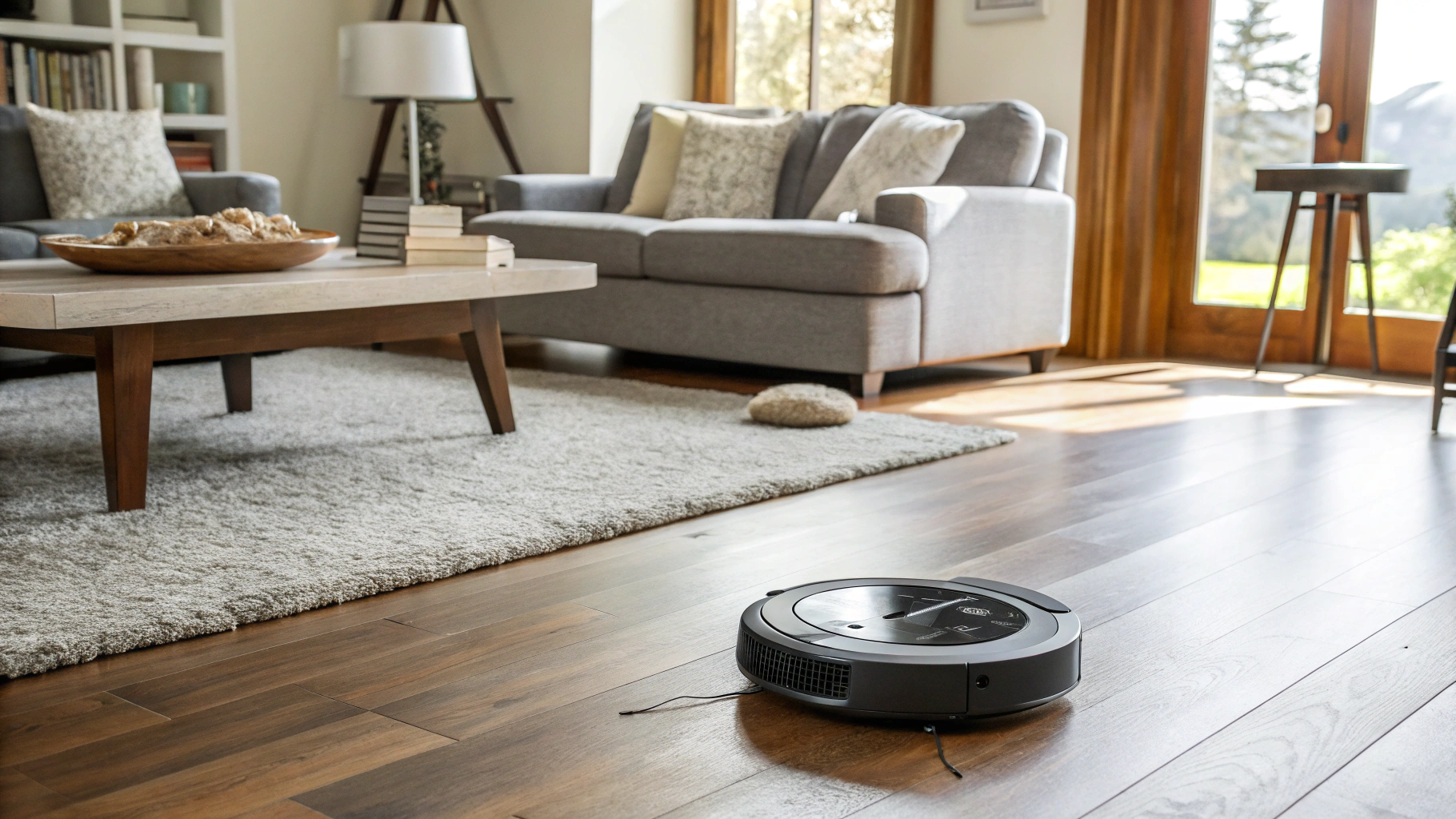
As I ventured into the realm of robotic vacuums for the first time, I found myself amidst an astonishing array of models, each flaunting its own unique attributes. The promise of achieving an effortlessly cleaner home was enticing; however, I quickly realized that a careful examination of critical factors—like navigation capabilities, suction power, and compatibility with smart home systems—was imperative before committing to any purchase.
For those on the hunt for the quintessential robotic vacuum tailored to meet their particular needs, grasping these subtleties is essential. My journey began with a meticulous assessment of my living space’s configuration and the specific cleaning trials I frequently encounter, such as the persistent struggle against pet hair and the accumulation of dirt in high-traffic areas. I contrasted various navigation technologies, from sophisticated laser-guided systems to more rudimentary bump-and-go approaches, pinpointing which would maneuver through my home’s layout with finesse and avoid getting ensnared beneath furniture. Additionally, I delved into the intricacies of filtration systems, given the importance of maintaining a healthy environment for those prone to allergies.
In the quest to identify the ideal robotic vacuum, aligning its features with individual preferences is crucial—factors like ease of maintenance and app connectivity cannot be overlooked. By conveying these insights, I aspire to steer you toward a choice that not only fulfills your cleaning aspirations but also harmonizes with your lifestyle. Don’t hesitate to explore a variety of models; the right one can profoundly enhance your home’s atmosphere.
Exploring the Top Navigation Technologies in Robotic Vacuums
During my first foray into the world of robotic vacuums, I uncovered the significance of various navigation technologies. Understanding these can make all the difference in choosing the right model for your home. Key navigation features such as laser-guided systems versus bump-and-go techniques are vital for efficient cleaning and maneuverability.
| Navigation Technology | Advantages | Disadvantages |
|---|---|---|
| Laser-guided Systems | Precision navigation, avoids obstacles, efficient coverage | Higher cost, may require maintenance |
| Bump-and-Go | Cost-effective, simple technology | Less efficient, may miss spots, can get stuck |
| Camera-based Navigation | Maps home layout, adapts to changes | Limited in dark areas, privacy concerns |
| Infrared Sensors | Budget-friendly, reliable obstacle detection | Slower navigation, less sophisticated |
Robotic vacuums require no maintenance and work flawlessly in all homes.False
Robotic vacuums need maintenance and may not suit every home layout.
Choosing a robotic vacuum should consider navigation and filtration systems.True
These features are vital for effective cleaning and allergy management.
Overview of Navigation Systems
The journey of navigation has transcended from celestial guiding stars to cutting-edge navigational technologies. This disquisition on navigation systems illuminates their diverse evolution and classifications. Contemporary systems encompass technologies such as GPS, inertial navigation, and both satellite and marine navigational frameworks. Once, dead reckoning charted our course; now, aviation aids and advanced terrestrial techniques enhance accuracy. The rise of electronic solutions heralds the development of global navigation satellite systems, marking monumental progress. The horizon promises smarter maritime navigational innovations, broadening the scope of navigation applications. Today, tools and aids bestow unparalleled benefits, ensuring frictionless movement across the globe.
Comparing LiDAR and RGB Camera Systems
In the domain of remote sensing innovations, the discussion surrounding LiDAR versus RGB cameras becomes paramount. LiDAR, celebrated for its exceptional depth resolution, dominates in 3D mapping arenas and presents formidable benefits for autonomous vehicles and precision agriculture. In stark contrast, RGB camera systems often falter in resolution, particularly in aerial contexts. The efficacy of LiDAR in environmental oversight is magnified by its unrivaled resolution, thereby eclipsing the RGB camera’s shortcomings. To cultivate holistic imaging systems, the synthesis of these technologies—sensor fusion—is indispensable. Ultimately, a nuanced comprehension of these imaging modalities can significantly enhance machine vision, streamlining data acquisition across diverse sectors.
Efficiency and Coverage Considerations
In the ever-evolving realm of today, harmonizing efficiency with expansive coverage is of utmost significance. This intricate endeavor requires deft strategies to amplify both aspects without compromise. A thoughtful interplay between efficiency and coverage compels an astute examination of performance metrics alongside robust allocation of resources. By thoroughly exploring efficiency paradigms, one can enhance operational efficacy while maintaining fiscal prudence. Ultimately, the art of advancing operational efficiency rests upon the seamless integration of all-encompassing coverage with wise resource deployment, crafting a blend of innovation and practicality.
What Are the Latest Suction and Mopping Technologies?

Discovering My Ideal Robotic Vacuum: A Tailored Journey
Embarking on the quest for a robotic vacuum was nothing short of overwhelming for me. Faced with an array of options, the search felt like navigating a labyrinth. I had to strike the perfect equilibrium between performance and price. Through diligent research and hands-on experience, I unearthed the essential elements that truly matter in selecting the ideal robotic vacuum suited to one’s unique requirements.
Firstly, gaining insight into the specific needs of my living space was paramount. With hardwood floors and a playful feline companion, it became evident that I required a vacuum equipped with robust suction capabilities and anti-tangle features. Contemporary models, such as those from Roborock and Ecovacs, present options boasting remarkable suction capacities exceeding 20,000Pa, meticulously engineered to manage pet hair while steering clear of the notorious clogs.
Moreover, the advent of sophisticated features like smart navigation has revolutionized the performance of these devices. The incorporation of lidar navigation and AI-driven obstacle avoidance has greatly improved the cleaning experience, ensuring that every nook is effortlessly addressed. As I observed how various models tackled both carpets and hard surfaces, I recognized the critical role of adjustable suction settings and mop configurations.
To select the perfect robotic vacuum, one must weigh factors such as suction strength, anti-tangle technology, intelligent navigation systems, and floor type compatibility tailored to individual living environments.
Additionally, I’ve come to value vacuums equipped with self-cleaning capabilities. Systems featuring auto-docking mechanisms that empty dustbins and cleanse mop pads substantially minimize the necessity for manual upkeep. If you’re contemplating the addition of a robotic vacuum to your home, my advice is to begin by assessing your flooring types and pinpointing the specific challenges you aim to conquer—be it dealing with pet fur, sprawling spaces, or frequent messes. Trust me, this investment can truly transform your home cleaning experience, and I’m confident that you, too, will find the perfect match, just as I did.
Exploring the Cutting-Edge of Suction and Mopping Technologies in Robotic Vacuums
From my experience, choosing the right robotic vacuum is vital for an efficient clean. The latest technologies, including strong suction capabilities, intelligent navigation, and self-cleaning features, make a significant difference in performance and maintenance.
| Key Features | Importance | Examples |
|---|---|---|
| Suction Strength | Essential for effective cleaning, especially with pet hair. | Roborock, Ecovacs (over 20,000Pa) |
| Anti-Tangle Technology | Prevents clogs, ensuring uninterrupted operation. | Various contemporary models |
| Smart Navigation | Improves efficiency by navigating obstacles expertly. | Lidar navigation, AI obstacle avoidance |
| Self-Cleaning Features | Reduces manual maintenance, enhancing usability. | Auto-docking dustbin emptying |
| Floor Type Compatibility | Ensures optimal performance across different surfaces. | Suitable for hardwood and carpets |
Robotic vacuums do not need to have strong suction capabilities.False
Strong suction is crucial for effectively managing pet hair and dirt.
Smart navigation features significantly enhance robotic vacuum performance.True
Advanced navigation helps the vacuum clean efficiently and avoids obstacles.
Suction Power Dynamics
Grasping the intricacies of suction power unveils a sophisticated interplay between air withdrawal and suction dynamics. At the core of cutting-edge suction technology lies an adept command of vacuum force, guiding industrial systems with remarkable accuracy. The tenets of pneumatic suction rely on pressure differentials, thereby enhancing efficiency. Moreover, dynamic mechanisms display exceptional performance, underscored by meticulous calculations of suction power. By harnessing fluid dynamics, the suction effect is amplified, showcasing formidable strength and efficacy. A profound understanding of fluid suction analysis enriches industry mechanics, illuminating the nuances of pressure and force dynamics.
Hybrid Mopping Systems
Exploring the domain of hybrid mopping systems unveils an astonishing array of cutting-edge cleaning solutions. These adaptable mops seamlessly blend the prowess of steam mops with innovative mopping technologies, ushering in a new era of floor maintenance. Eco-conscious mopping alternatives, particularly in commercial settings, deliver sustainable advantages that far outshine traditional methods. With state-of-the-art technology driving intelligent hybrid mops, both residential and commercial spaces benefit immensely. In your quest for optimal hybrid mopping solutions, contemplate automated systems that transcend conventional cleaning paradigms. Join the floor care revolution now!
Performance Metrics and Use Cases
In the intricate tapestry of commerce, performance metrics reign supreme. These quantifiable yardsticks, including key performance indicators (KPIs), serve as essential tools for scrutinizing and assessing effectiveness across various domains, from project management to marketing. Embracing a holistic performance metrics framework unveils their significance. In dynamic landscapes, particularly within agile settings, software performance metrics uniquely enhance decision-making. Exploring illustrative examples and case studies uncovers optimal practices for deployment. Ultimately, harnessing performance measurement instruments metamorphoses data analysis, positioning performance metrics as pivotal for strategic triumph.
How to Integrate Smart Technology into Robotic Vacuums?
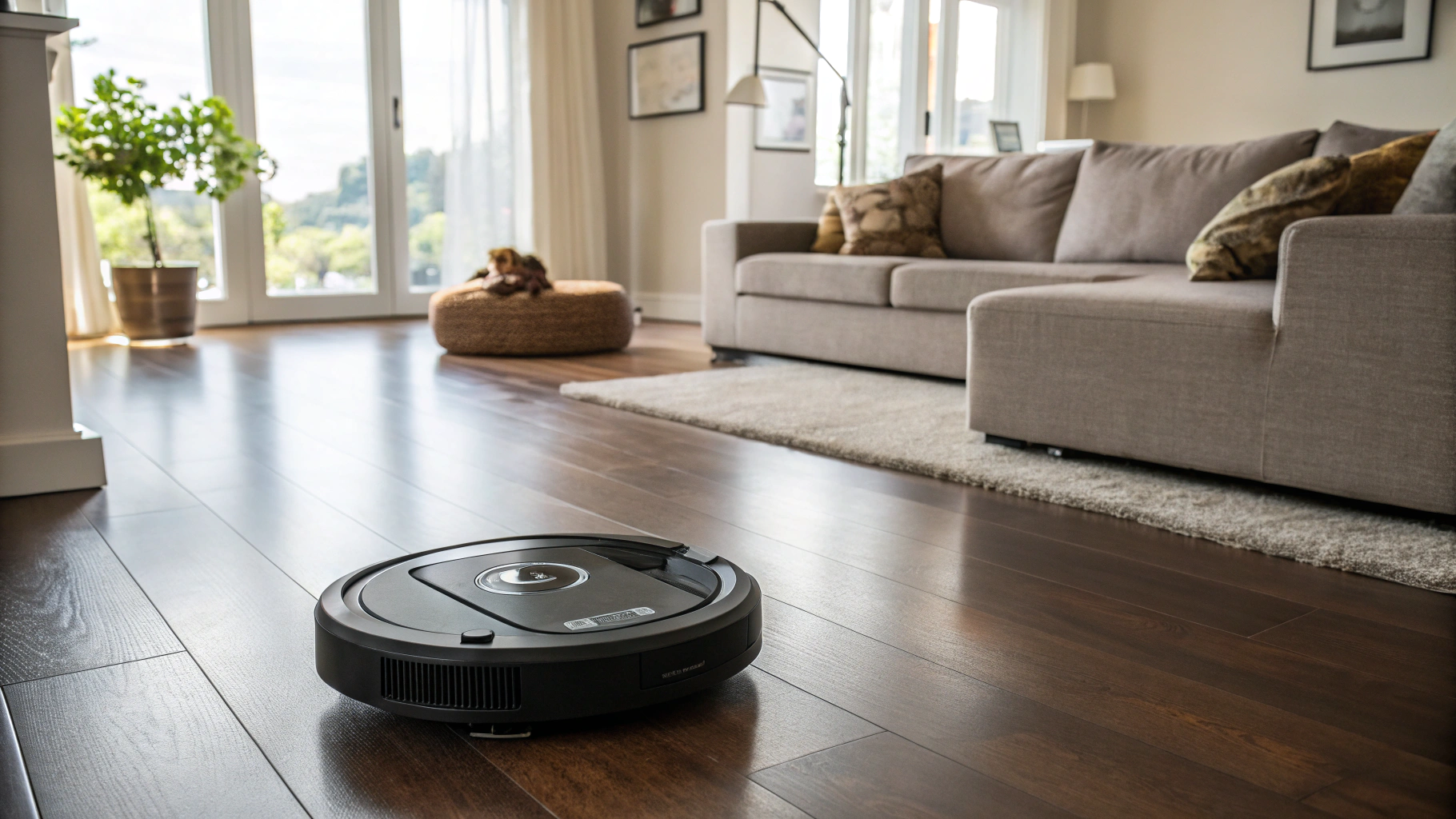
As I embarked on my journey into the realm of robotic vacuums, I was struck by the astonishing array of models and the impressive technological promises each brand boasted. However, the secret to selecting the ultimate robotic vacuum transcends mere preference for the newest variant; it hinges on comprehending how these adept appliances seamlessly weave into the fabric of your daily life. The nuances of sensor fusion, AI-powered navigation, and their harmonious interplay with home ecosystems are critical elements that collectively enrich your smart home experience.
Picture this: stepping into an immaculate living room, a testament to a smart device that not only learns the intricacies of your home’s layout but also anticipates areas with high foot traffic, meticulously adapting its cleaning approach. The true enchantment lies within the transformation of routine chores into effortless endeavors, liberating your precious time for pursuits that truly matter. Modern innovations, including the Matter protocol, IoT connectivity, and advanced AI-driven predictive cleaning, have elevated today’s robotic vacuums to unparalleled heights of intelligence and efficiency, positioning them as more than mere cleaning tools—they have become astute allies in the stewardship of your home.
Based on my insights, pinpointing the ideal robotic vacuum requires a thoughtful evaluation of your particular circumstances, encompassing factors such as flooring characteristics, the presence of pets, and compatibility with existing smart home devices. Venture into the engaging universe of smart vacuums, and you’ll discover one that transmutes the drudgery of cleaning into a harmonious orchestration of precision.
Summary: The quintessential robotic vacuum harnesses cutting-edge sensor technology, AI navigation, and flawless integration with smart home systems, metamorphosing cleaning from a tedious chore into a streamlined, intelligent process.
If you’re contemplating a foray into the smart living phenomenon, why not initiate this adventure with a robotic vacuum uniquely designed to cater to your specific requirements? I assure you, the judicious choice will not only elevate the cleanliness of your abode but also bestow upon you an enhanced sense of tranquility.
Integrating Smart Technology with Robotic Vacuums: A Comprehensive Guide
As I delved into the world of robotic vacuums, I was amazed by the range of options and the technological marvels each claimed to offer. The essence of choosing the perfect robotic vacuum lies not just in the latest models but in understanding how these devices integrate seamlessly into my daily routines. The fusion of sensors, AI navigation, and connectivity with home ecosystems profoundly enhances the smart home experience. The quintessential robotic vacuum harnesses cutting-edge sensor technology, AI navigation, and flawless integration with smart home systems, metamorphosing cleaning from a tedious chore into a streamlined, intelligent process.
| Feature | Description |
|---|---|
| Sensor Fusion | Integrates multiple sensing technologies for accurate room mapping and obstacle avoidance. |
| AI-Powered Navigation | Allows the vacuum to learn and adapt to your home’s layout and cleaning patterns. |
| Home Ecosystem Integration | Works seamlessly with existing smart home devices for enhanced control and monitoring. |
| Advanced Cleaning Protocols | Utilizes IoT connectivity for real-time adjustments and predictive cleaning tasks. |
| Compatibility Factors | Evaluates flooring types and pet presence to optimize performance. |
Robotic vacuums do not adapt to the home’s layout or cleaning needs.False
This statement is false; robotic vacuums learn and adapt to layouts.
Modern robotic vacuums utilize AI for advanced predictive cleaning.True
This statement is true; AI enhances their cleaning efficiency and intelligence.
AI and Machine Learning Applications
The advent of AI and machine learning is transforming global sectors in unprecedented ways. By harnessing marketing AI tools and deploying machine learning within healthcare, the ramifications are substantial. Automation powered by AI optimizes operational workflows, significantly boosting efficiency. In the business realm, machine learning unveils promising solutions, propelled by sophisticated algorithms that navigate data analysis. Real-world implementations of AI exemplify advantages such as heightened accuracy and creativity. Grasping the distinctions between AI and machine learning is essential for future strategic endeavors, particularly in finance and education, as these trends forecast expansive opportunities.
Voice Control and Automation
Within the tapestry of contemporary abodes, the advent of voice control technology is revolutionizing our daily engagements. Home automation frameworks leverage voice-activated assistants, significantly enhancing ease of use. Picture the remarkable transformation of mundane chores through the integration of IoT devices and voice recognition algorithms, facilitating a world of hands-free command. As pioneers in the landscape of effortless experiences, voice command technology catalyzes the evolution of intelligent home automation. Welcome to the age of voice interface innovation, where these cutting-edge applications redefine our existence and usher us into a new paradigm of living. Embrace this future today.
Smart Ecosystem Integration
The convergence of a smart ecosystem has transcended mere futurism, now manifesting as an undeniable reality. This sophisticated mesh connects everything—ranging from intelligent residences to vast urban landscapes. Vital to this evolution, ecosystem integration tools, along with advanced technology, substantially boost operational efficiency. The Internet of Things catalyzes innovation, while ecosystem management software guarantees seamless functionality. A robust architecture is requisite, facilitating cross-platform collaboration and fostering sustainability. Ultimately, the intricate cohesion of smart solutions aims to enhance interconnectedness, propelling digital integration and reinforcing interoperability in technological ecosystems.
What are the Long-term Costs of Maintenance?
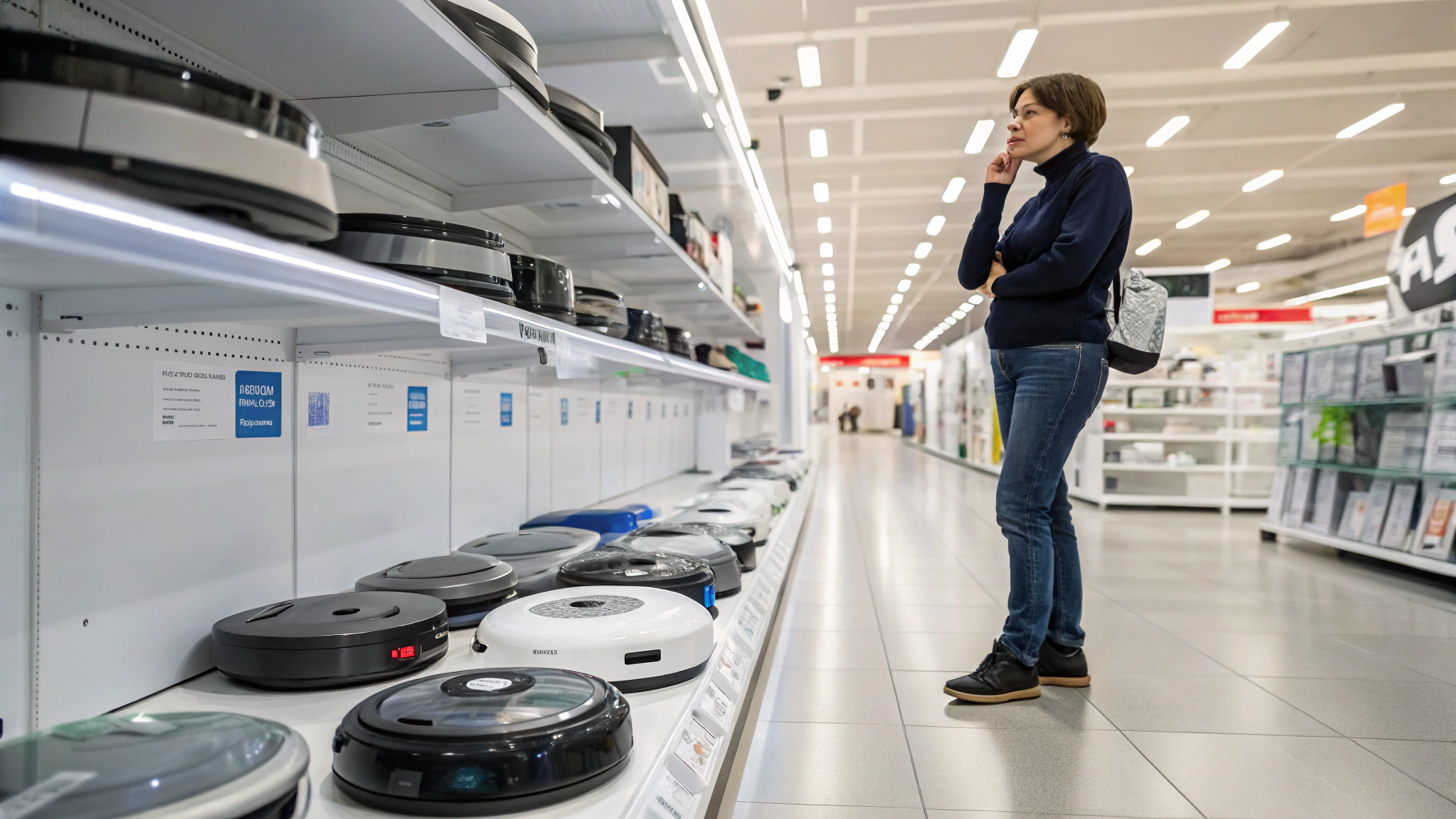
My Journey to Selecting the Ideal Robotic Vacuum
Embarking on the quest for the ideal robotic vacuum was a daunting experience. The sheer plethora of options, each boasting unique features and enticing promises, left me feeling somewhat lost. I quickly recognized that in order to navigate this labyrinth effectively, I needed to pinpoint my essential needs and grasp the long-term advantages of my investment. This adventure transcended merely finding a cleaning apparatus; it was about enriching my life with a device that would seamlessly integrate into my daily routine.
Grabbing My Attention
I vividly remember standing amid the aisles of a bustling home appliance store, a sea of robotic vacuums stretching out before me. The pressing query was, “Which model truly caters to my cleaning requirements?” My options spanned from rudimentary designs to sophisticated devices flaunting advanced AI and mapping technologies. My objective was clear: to select a vacuum that would not only excel in performance but also prove cost-effective over time.
Igniting My Interest
As a proponent of efficiency and cutting-edge technology, I found myself captivated by models boasting enticing features such as smart home compatibility, HEPA filtration systems, and self-emptying dust containers. I envisioned a future where my floors sparkled without me ever needing to lift a finger. The prospect of orchestrating cleaning schedules via my smartphone while engrossed in work only heightened my fascination.
Cultivating A Desire
The pivotal moment arrived when I delved into the long-term maintenance implications. My aim was to find a vacuum that wouldn’t demand frequent replacements or incur exorbitant upkeep costs. Reviewing feedback from users and insights from industry experts illuminated the fact that certain models delivered exceptional performance without the associated burden of costly consumables. This revelation intensified my longing for a unit that excelled in functionality while remaining economical in ongoing costs.
Taking Action
Ultimately, I made my decision by carefully weighing the array of features, maintenance ease, and pricing. I selected a model that boasted smart mapping capabilities, eliminating the hassle of redundant cleaning in the same spaces, and adeptness at handling pet hair—a non-negotiable in my home. If you find yourself on a similar journey, I suggest starting with a comprehensive understanding of your requirements. These considerations could significantly simplify and enrich your decision-making process.
Summary for Featured Snippet: My selection of the perfect robotic vacuum revolved around prioritizing smart features and minimal long-term maintenance expenses, enhancing my lifestyle without straining my finances. By honing in on my cleaning needs and future costs, I discovered a model equipped with efficient mapping capabilities and pet hair handling.
I sincerely hope that my experience provides valuable insights as you navigate the selection of a vacuum that aligns seamlessly with your lifestyle.
The Hidden Long-term Costs of Maintaining a Robotic Vacuum
The journey I undertook to choose the ideal robotic vacuum revealed the importance of understanding long-term maintenance costs. I discovered that prioritizing smart features and economical upkeep not only improved my cleaning efficiency but also enhanced my lifestyle without straining my finances.
| Feature | Importance | Long-term Cost Implication |
|---|---|---|
| Smart Mapping | Optimizes cleaning routes | Reduces battery and maintenance wear |
| HEPA Filtration | Enhances air quality | Prevent frequent replacements |
| Self-Emptying Container | Convenience | Limits costs of dust bags |
| Durability | Longevity of use | Minimizes the need for replacements |
| Efficiency with Pet Hair | Ensures clean living space | Reduces special cleaning tools |
The ideal robotic vacuum should have high maintenance requirements.False
Low maintenance needs were prioritized for efficiency and cost.
Smart mapping capabilities are beneficial in robotic vacuums.True
Smart mapping helps avoid redundant cleaning and enhances efficiency.
Understanding Total Cost of Ownership
In the intricate landscape of commerce, grasping the Total Cost of Ownership (TCO) is paramount. This comprehensive analysis transcends superficial purchase prices, illuminating the complete ownership expenditure throughout an asset’s lifespan. By utilizing a meticulous formula for TCO, organizations can evaluate their costs with precision, showcasing illustrative instances of its significant implications. Recognizing the variables influencing TCO and devising strategies to mitigate it yields significant advantages. Within IT and project management realms, an astute understanding of TCO fosters informed decision-making and strategic foresight, underpinning effective asset stewardship.
Cost-Benefit Analysis of Models
In the ever-evolving tapestry of the financial realm, the potency of fiscal models assumes an unrivaled gravity. An astute cost-benefit disquisition reveals elusive insights, sharpening the acumen for informed choices. By scrutinizing models via comparative cost evaluations and quantitative assessments, one elucidates their efficacy while anticipating plausible returns on investments. By immersing oneself in the advantages of economic models and the meticulous scrutiny of their frameworks, one can adeptly harness the nuanced impacts on economic landscapes. Elite cost analysis methodologies are quintessential for appraising performance amidst intricate risk-benefit conundrums, orchestrating data-driven stratagems that underpin robust growth.
Maintenance and Parts Lifecycle
Within the labyrinthine domain of maintenance management, grasping the nuances of parts lifecycle management proves indispensable. Sophisticated maintenance methodologies, particularly predictive maintenance, significantly refine both equipment upkeep and lifecycle cost assessments. An adept approach to spare parts oversight, paired with a meticulously crafted maintenance timetable, harmonizes with industry best practices to secure uninterrupted operations. By fusing total productive maintenance with advanced asset stewardship, entities can amplify maintenance efficacy. Mastery of maintenance repair and operations, alongside diligent parts procurement strategies, empowers organizations to optimize asset longevity. Embrace the paradigm of maintenance optimization to enhance equipment lifecycle and inventory management, reinforcing preventive maintenance initiatives.
What Emerging Technologies Should You Know About?
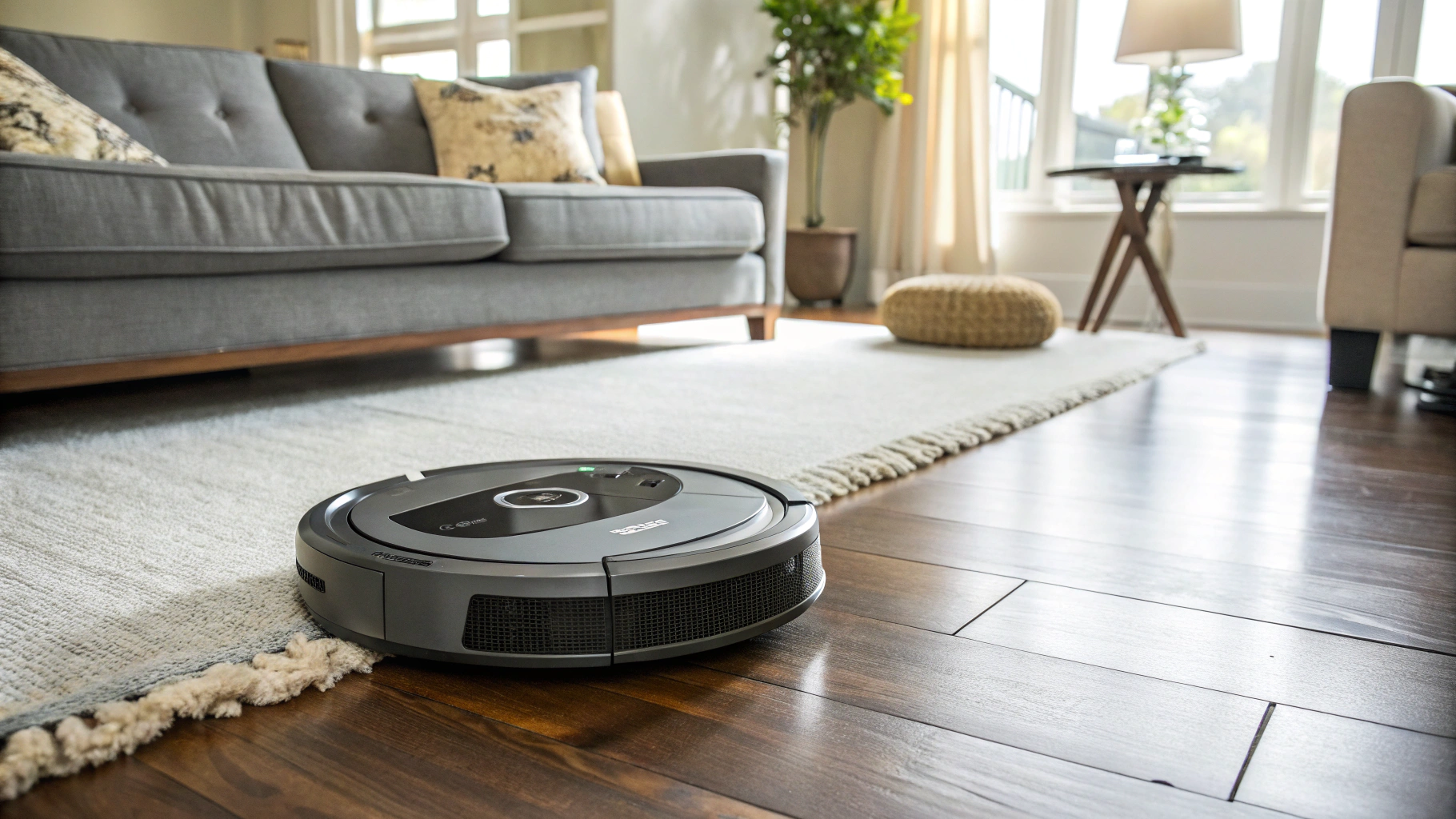
Unveiling the Art of Selecting the Ideal Robotic Vacuum Tailored to My Needs
Embarking on the journey to enhance my cleaning regime with a robotic vacuum was nothing short of daunting. The sheer multitude of choices available left me questioning what features were genuinely indispensable for my home environment. It wasn’t until I delved into a thorough exploration of reviews and personal testimonials that my confusion began to dissipate. I came to understand that the key to selecting the perfect robotic vacuum lies in a clear comprehension of one’s own requirements paired with the right attributes.
As I sifted through a range of brands and designs, I quickly recognized that my foremost priorities revolved around effective carpet cleaning and robust suction capabilities. Like many, I desired a gadget equipped with intelligent navigation and the prowess to tackle pesky pet hair. Through meticulous research, I discovered that elements such as obstacle detection and mobile app connectivity can immensely elevate the user experience and overall convenience. With this focused strategy, confidence in my choice blossomed.
In the end, I opted for a model that has genuinely revolutionized my cleaning routine. It adeptly manages pet hair, transitioning effortlessly from space to space, proving itself to be an invaluable investment. If you find yourself on a similar quest, I encourage you to prioritize features that seamlessly integrate with your lifestyle and suit the layout of your home. Believe me, taking the time to evaluate your specific needs could pave the way to discovering your ideal robotic vacuum. Ponder these considerations, and you may very well find yourself graced with a solution that fits you perfectly.
Essential Factors to Consider When Choosing a Robotic Vacuum
As I reflect on my experience choosing the right robotic vacuum, I realize that understanding my specific cleaning needs was crucial. Prioritizing features like efficient carpet cleaning and smart navigation not only simplified my decision but also transformed my cleaning routine into a hassle-free experience. By evaluating these aspects carefully, I’m confident you too can find the ideal device that complements your home.
| Feature | Importance | Benefits |
|---|---|---|
| Effective Carpet Cleaning | High | Ensures thorough dirt removal and maintains clean carpets. |
| Strong Suction Power | High | Captures pet hair and debris efficiently. |
| Intelligent Navigation | Medium | Enhances cleaning coverage and prevents obstacles. |
| Mobile App Connectivity | Medium | Allows remote control and monitoring for convenience. |
| Obstacle Detection | Medium | Prevents collisions and reduces potential damage. |
Selecting a robotic vacuum requires no understanding of needs.False
Understanding your needs is essential to choose the right vacuum.
Features like pet hair handling are crucial in choosing a vacuum.True
Effective pet hair management is a top priority for many users.
Advancements in Sensor Technologies
In the dynamic sphere of sensor technology, recent innovations herald a transformative epoch. From the cultivation of intelligent sensors to the refinement of exact optical technologies, the arena brims with groundbreaking advancements. As we gaze into the future, industrial sensor technologies are parameterizing day-to-day applications. Within the Internet of Things, sensor trends are reshaping interconnectivity, while breakthroughs in automotive sensors elevate safety standards. Wearable devices are not merely enhancing health monitoring but are revolutionizing it entirely, and eco-friendly sensor technologies are fostering sustainability. These avant-garde sensors promise to deliver groundbreaking solutions, steering the trajectory of sophisticated sensing innovations. Ongoing research in this field continues to unlock unparalleled advantages for automation.
Innovations in Charging and Power
The evolution of power technology has drastically transformed our energy perceptions. Swift charging mechanisms and electric vehicle stations epitomize this electric mobility renaissance. Novel charging innovations—such as untethered charging techniques and mobile power options—address contemporary exigencies. Concurrently, harnessing renewable energy for charging resonates with eco-friendly aspirations, nurturing an environmentally sustainable future. Furthermore, enhancements in charging frameworks and intelligent charging systems significantly amplify efficiency. As battery technology progresses, energy storage solutions unveil exciting possibilities. Ultimately, these advancements in power delivery herald a more sustainable and efficient tomorrow.
Future-Proofing Your Purchase
Traversing the intricate maze of consumer culture requires a well-crafted buying approach. Prioritize safeguarding your investments to guarantee durability and substantial long-term benefits. Engage with purchasing manuals that spotlight eco-friendly selections in harmony with evolving market dynamics. Seek forward-thinking products that demonstrate savvy spending and value preservation. Emphasize risk assessment during acquisition, sharpening your decision-making prowess. In a world of uncertain investments, a meticulous eye for quality paves the path to astute consumerism. Choose wisely, favor enduring items, and triumph in the realm of purchase anticipation.
Conclusion
In summary, selecting the right robotic vacuum is a multifaceted journey that requires a thorough understanding of your unique cleaning needs and preferences. By considering essential factors such as navigation technology, suction power, and compatibility with various floor types, you can streamline your decision-making process. Don’t overlook the importance of features designed for convenience, such as smart home integration and self-cleaning capabilities, which can greatly enhance your overall cleaning experience.
As you navigate through the diverse options available in the market, I encourage you to weigh not only the performance aspects but also the long-term costs associated with maintenance and operation. By investing time in this exploration, you’ll not only find a model that fits seamlessly into your lifestyle but also one that transforms your cleaning routine into a more efficient, effortless task. Take the plunge and embrace the advancements in robotic vacuum technology to elevate the cleanliness of your home while reclaiming your valuable time.

